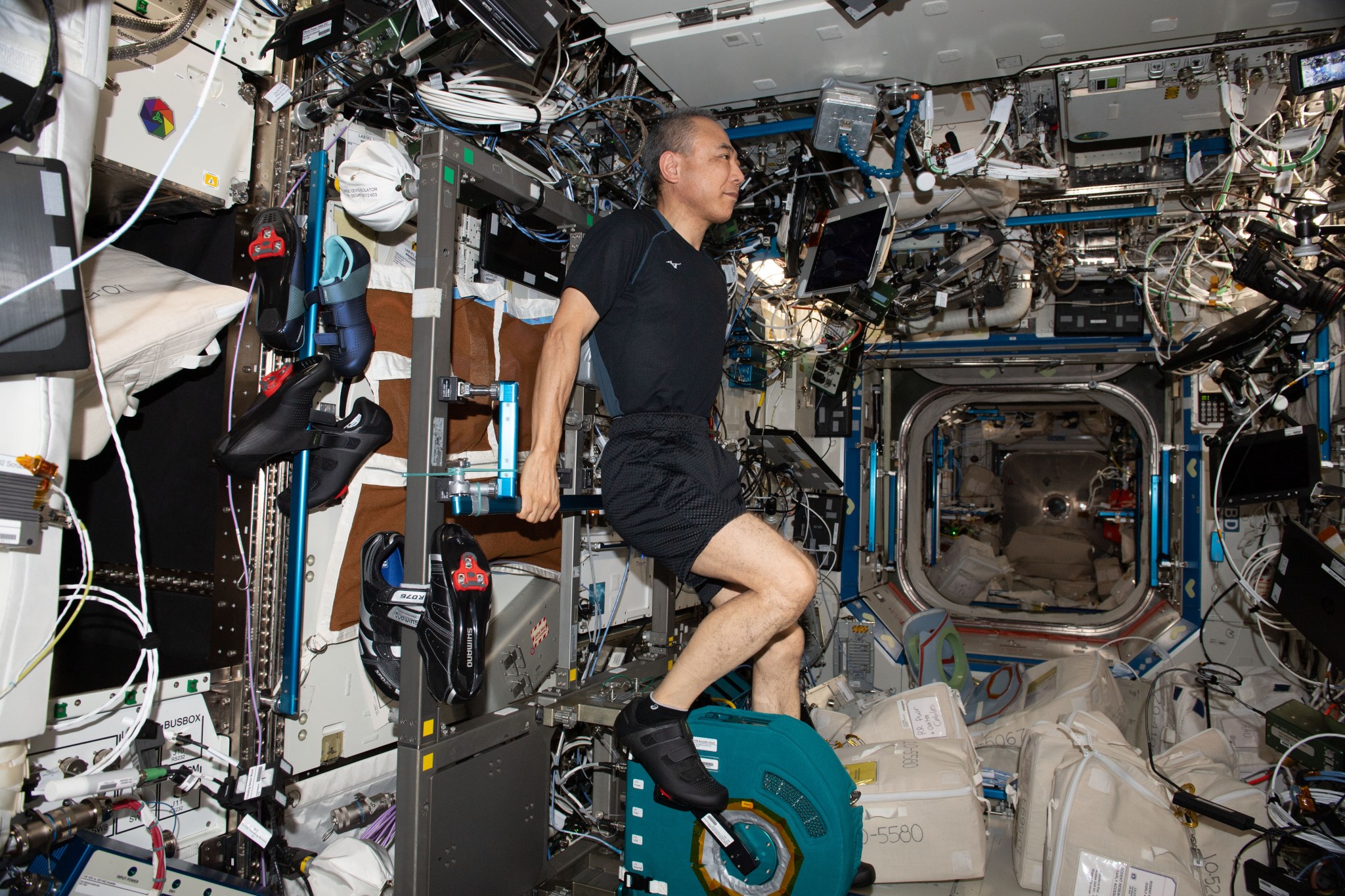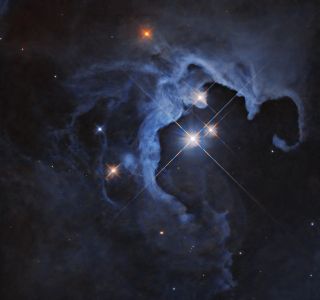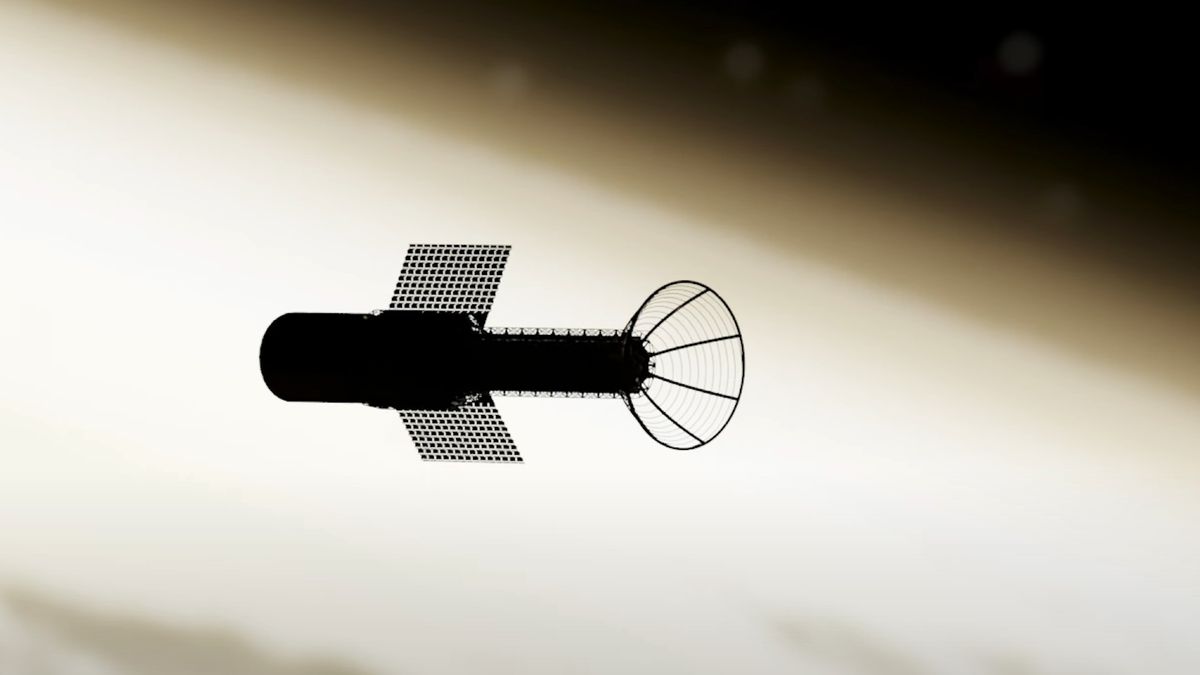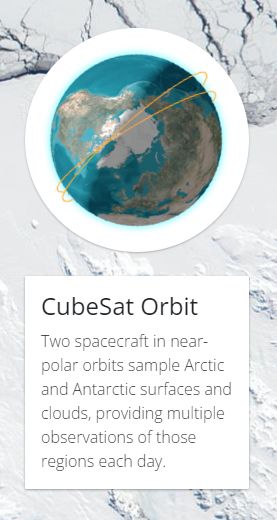Science in Space: May 2024 Future missions to the Moon and Mars must address many challenges, including preventing loss of bone and muscle tissue in astronauts. Research on the International Space Station is helping to address this challenge. Without Earth’s gravity, both bone and muscle atrophy, or become smaller and weaker. Early on, scientists realized that exercise is a critical part of maintaining healthy bones and muscles in space, just as it is on Earth. From simple elastic bands on early missions, exercise hardware has become increasingly advanced. Current equipment…
Read MoreMonth: May 2024
Readying Apollo 10 for Launch
Nighttime, ground-level view of the Apollo 10 space vehicle on Pad B, Launch Complex 39, Kennedy Space Center. This photograph of the 363-feet tall Apollo/Saturn V stack was taken during pull back of the mobile service structure. The Apollo 10 crew was astronauts Thomas P. Stafford, John W. Young, and Eugene A. Cernan.
Read MoreEnchanting new Hubble Telescope image reveals an infant star’s sparkle
Have you ever wondered what our sun looked like when it was young? Although we know the sun to be an unchanging, and even predictable source, of light in our skies, its youthful version some 4.6 billion years ago was quite active. During those formative years, our star spewed solar flares every week or so, despite shining only about a third as bright as it does now. Scientists also suspect that even though the early sun exhibited a dim stature, it kept the then-young Earth warm enough for life to…
Read MoreBlue Origin launches 1st Black astronaut candidate, age 90, and 5 space tourists on New Shepard rocket (video)
Blue Origin’s nearly two-year human spaceflight drought is over. Jeff Bezos‘ aerospace company launched its NS-25 mission today (May 19), sending six people — including the United States’ first-ever Black astronaut candidate — on a brief trip to suborbital space aboard its New Shepard rocket-capsule combo. It was Blue Origin‘s first space tourism launch since August 2022. That previous mission went well, but the company’s next flight, an uncrewed research jaunt that launched a month later, did not: New Shepard suffered a serious anomaly, causing the destruction of the first-stage…
Read More‘Star Wars: The Phantom Menace’ at 25: Who are the angels on the moons of Iego?
Yippee! “Star Wars: The Phantom Menace” blows out the candles on its 25th anniversary birthday cake today. After taking in a screening during its short return to theaters for Star Wars Day week, we can honestly say that this polarizing film still has its problems but honestly elicits enough thrills to warrant a repeat viewing, if only to hear John Williams sweeping musical score and see Ray Park’s acrobatic Darth Maul twirl his double-bladed lightsaber while seething with palpable hatred toward the gallant Jedi Knights. “Episode 1” landed on May…
Read MoreNASA-funded pulsed plasma rocket concept aims to send astronauts to Mars in 2 months
An innovative rocket system could revolutionize future deep space missions to Mars, reducing travel time to the Red Planet to just a few months. The goal of landing humans on Mars has presented a myriad of challenges, including the need to quickly transport large payloads to and from the distant planet, which, depending on the positions of Earth and Mars, would take almost two years for a round trip using current propulsion technology. The Pulsed Plasma Rocket (PPR), under development by Howe Industries, is a propulsion system designed to be…
Read MoreNASA’s PREFIRE mission is ready to unlock the mysteries of Earth’s poles
NASA is preparing to launch its latest climate science mission, the Polar Radiant Energy in the Far-Infrared Experiment (PREFIRE), which aims to capture brand new data on how heat is lost to space from Earth’s polar regions. PREFIRE consists of a pair of cubesats that will launch separately into near-polar orbits. The first, “Ready, Aim, PREFIRE,” is set to launch no earlier than (NET) May 22, on a Rocket Lab Electron rocket from Pad B at the company’s Launch Complex 1, in Māhia, New Zealand. The second cubesat, “PREFIRE and…
Read MoreThis Week In Space podcast: Episode 111 —The Big Glass Wars
On Episode 111 of This Week In Space, Rod and Tariq talk with Dr. John Mulchaey, Director of the Carnegie Observatories, about the threat to completing two new giant astronomical observatories. Welcome to the Big Glass Wars! That’s right, just when you thought you’d heard it all, turns out there’s hot competition among a few countries to stay on the cutting edge of optical astronomy, and to do that, you need a great big hunk of glass to gather light from distant galaxies and stellar systems. Enter the Carnegie Observatories…
Read MoreJames Webb Space Telescope sees Orion Nebula in a stunning new light (images)
The Orion Nebula may be a familiar and well-studied celestial object, but new images from the James Webb Space Telescope (JWST) show this star-forming cloud of gas and dust in an incredibly new and vibrant light. The Orion Nebula, also known as “Messier 42” (M42), is located around 1,500 light years from Earth toward the constellation of Orion. This makes it the closest large star-forming and stellar nursery to our solar system. Visible to the naked eye under dark skies, the Orion Nebula has been studied throughout human history, but…
Read MoreNASA to Start Designing More Sustainable Jet Engine Core
4 min read Preparations for Next Moonwalk Simulations Underway (and Underwater) This artist concept shows a NASA-developed small-core jet engine installed in General Electric Aerospace’s CFM RISE jet engine design. The more fuel-efficient small core powers a large open turbofan, which also helps increase efficiency. The effort is part of NASA’s Sustainable Flight National Partnership to help inform the next generation of ultra-efficient airliners. GE Aerospace NASA, alongside industry, will soon begin designing a new jet engine concept for the next generation of ultra-efficient airliners — officially graduating to the…
Read More







